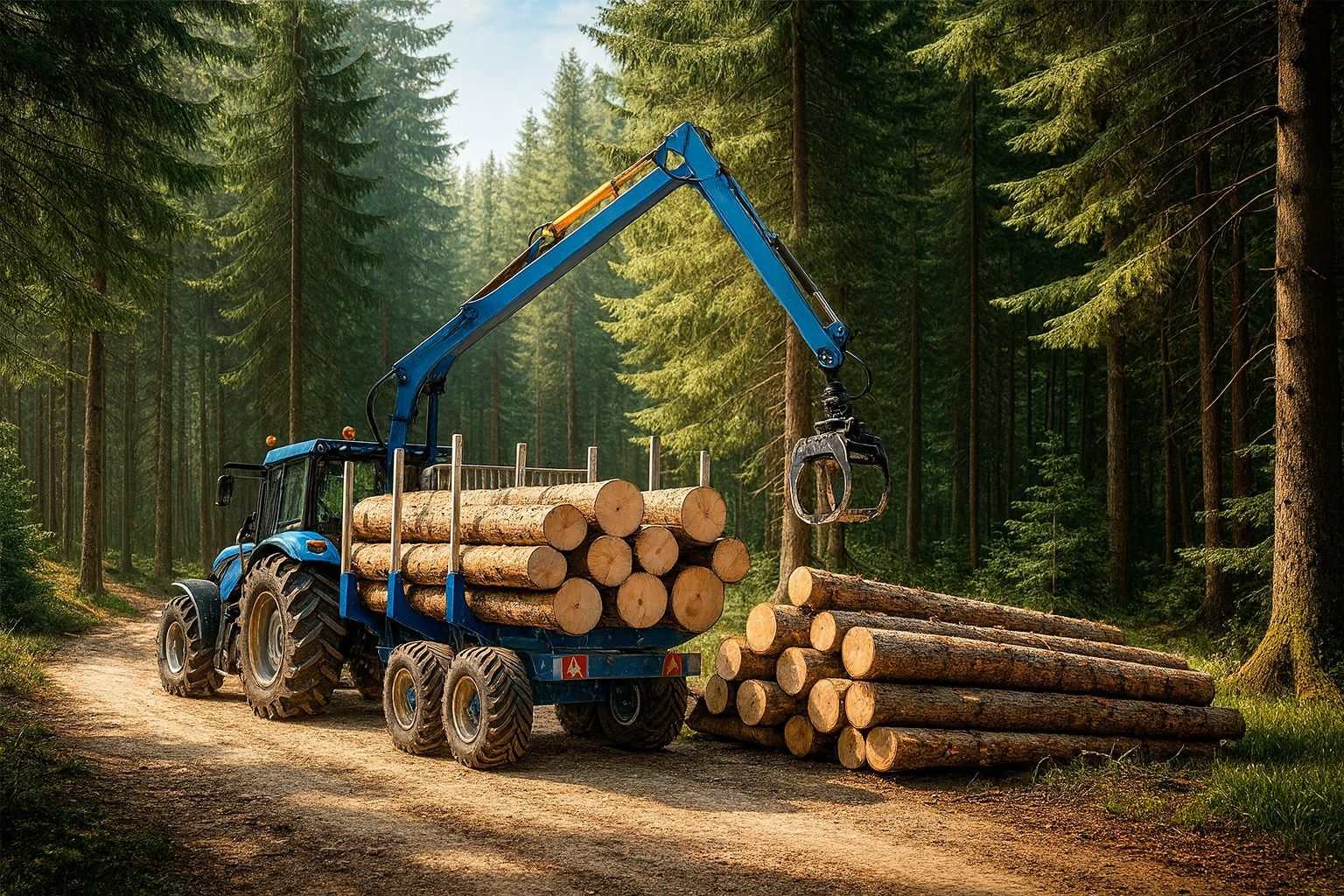OTTAWA – November 27, 2025 — Canada has formally pivoted its trade strategy for two of its most important industries, unveiling a sweeping package of measures to shield the country’s steel and softwood lumber sectors from punishing U.S. tariffs and to push Canadian producers to rely far more on domestic and diversified markets.
Prime Minister Mark Carney’s new plan tightens limits on foreign steel, ramps up financial support for lumber producers, subsidizes freight costs inside Canada, and hardwires “Buy Canadian” rules into major federal spending — a shift he and his ministers are framing as a move “from reliance to resilience” in the wake of an escalating trade war with Washington. [1]
The Trade Shock: Why Ottawa Is Moving Now
The announcements come after U.S. President Donald Trump slapped 50% tariffs on Canadian steel and pushed combined duties on softwood lumber to around 45%, dramatically raising costs for Canadian exports headed south. [2]
For decades, Canada has built its industrial base around the U.S. market. According to Carney, roughly three-quarters of all Canadian exports — and about 90% of steel, aluminum and lumber exports — were going to the United States as recently as last year. [3]
That model is now under direct strain:
- Trade talks with Washington broke down in October, after Ontario ran television ads in U.S. markets attacking Trump’s tariffs using a famous anti-tariff speech by former president Ronald Reagan. [4]
- Carney says the era of ever-tighter economic integration with the United States “is over,” even as he insists Canada is ready to restart negotiations when the U.S. is. He’s expected in Washington on December 5 for the final draw of the 2026 FIFA World Cup, and has signalled he will try to speak with Trump on the sidelines. [5]
Against that backdrop, Ottawa is effectively trying to build a home court advantage for Canadian steel and lumber — even if the U.S. border remains difficult for now.
Steel: Tighter Import Quotas, New Tariffs and Tougher Enforcement
The core of the steel package is about shrinking the space for foreign competitors in Canada’s own market and discouraging dumping, while keeping North American trade rules under CUSMA intact.
1. Cutting foreign steel access to the Canadian market
Starting December 26, 2025, Canada will sharply tighten tariff rate quotas (TRQs) — the volumes of steel that can enter without facing a 50% surtax: [6]
- Non–free trade agreement (FTA) countries
- TRQs fall from 50% to 20% of 2024 import levels.
- Any imports above that level will continue to face a 50% surtax.
- FTA partners (excluding the U.S. and Mexico)
- TRQs drop from 100% to 75% of 2024 levels.
- Over-quota volumes also face a 50% surtax.
The United States and Mexico remain exempt from these TRQs under CUSMA, but their own tariffs on Canadian steel still apply. [7]
2. A new 25% tariff on steel derivatives
Canada is also imposing a global 25% tariff on a wide range of steel derivative products, focusing on items heavily made of steel and already produced domestically. The initial list, expected to cover more than $10 billion in imports, includes: [8]
- certain shapes of iron and non-alloy steel
- doors and windows
- wire, ropes, cables and chains
- fasteners like nails and screws
- prefabricated buildings, bridges and wind towers
- metal-framed seating and some steel furniture
Ottawa says this move is designed to prevent foreign firms from sidestepping steel tariffs by shipping more finished products instead of raw or semi-finished steel.
3. Phasing out broad tariff remissions on U.S. steel
To help manufacturers adjust to higher tariffs, Canada had temporarily allowed broad remissions on some Canadian counter-tariffs related to U.S. imports. That is now being unwound: [9]
- The temporary horizontal remission for U.S. steel used in manufacturing and other sectors will expire January 31, 2026, except for auto, auto parts and aerospace.
- Remissions for aluminum will continue for longer, but the government will insist that any continuing relief be narrowly targeted, through a new application framework.
4. New anti-dumping and compliance tools
The Canada Border Services Agency (CBSA) is getting new teeth to tackle steel dumping and fraud at the border: [10]
- A revamped Border Watch portal to make it easier for insiders and competitors to tip off authorities about mislabelled or underpriced steel imports.
- Regular technical workshops with the Canadian Steel Producers Association to keep inspectors up to date on products and dodging tactics.
- A Market Watch Unit tasked with tracking global steel prices and quickly updating “normal values” so anti-dumping duties match real-world conditions.
- A dedicated steel compliance team focused solely on steel enforcement.
For context, the Canadian steel industry generates over C$4 billion in GDP and directly employs more than 23,000 people, making it one of the sectors most exposed to Trump’s 50% tariffs. [11]
Softwood Lumber: Loan Guarantees, Liquidity Support and a Housing Push
If steel is about keeping foreign competitors out, softwood lumber is about keeping Canadian mills alive until markets stabilise.
A sector under sustained pressure
Canada’s forest sector supports nearly 300 communities, employs about 194,000 workers directly (including 11,000 Indigenous workers), and adds over $21 billion to GDP. [12]
Softwood lumber is the backbone of that ecosystem:
- In 2024, Canada exported $7.3 billion in softwood lumber to the U.S., representing nearly 90% of all Canadian softwood exports.
- As of October 2025, most of those exports face a combined duty and tariff rate of about 45.6%.
- Rising costs and trade uncertainty have forced 22 mills to close and more than 50 mills to curtail operations, directly affecting over 5,600 workers since 2022. [13]
New money on top of earlier aid
Prior to this week, Ottawa had already announced $700 million in loan guarantees for the softwood sector and $500 million for diversification and competitiveness initiatives. [14]
The new package adds: [15]
- A C$500 million “top-up” to extend the BDC Softwood Lumber Guarantee Program into 2026, keeping credit flowing to mills that need to restructure.
- Another C$500 million in liquidity, drawn from the Large Enterprise Tariff Loan Facility, aimed at sawmills and integrated forest firms under intense cash-flow pressure.
- Simplified access rules for these facilities, after repeated industry complaints about slow approvals and complex disclosure requirements.
Ottawa is also tying the lumber strategy to its broader housing agenda:
- The Build Canada Homes initiative will favour “shovel-ready” housing projects that use Canadian wood products and can break ground within 12 months, creating a direct pull for domestic lumber. [16]
Freight Discounts and ‘Buy Canadian’: Making the Home Market Matter
A major theme of the new strategy is that distance inside Canada — not just international borders — has become a competitive barrier. Moving steel from Hamilton to Halifax or lumber from northern B.C. to Quebec City is expensive, especially when U.S. buyers used to sit right across the border.
50% freight discount for domestic shipments
Beginning in spring 2026, Ottawa will provide funding to CN and CPKC railways to enable a 50% freight-rate discount on interprovincial shipments of Canadian steel and lumber. [17]
The goal is to:
- Make it cheaper for firms to reorient sales from the U.S. toward Canadian customers.
- Support cross-country projects in housing and infrastructure that might otherwise lean on imported materials.
A new Buy Canadian Policy
Earlier this fall, the federal government outlined a “Buy Canadian” policy as part of its broader From Reliance to Resilience industrial strategy. [18]
Under the measures now being implemented:
- All federal contracts over $25 million, and federal grants and contributions for infrastructure, will prioritise Canadian materials.
- Projects using more than $250,000 worth of steel, aluminum or softwood lumber will generally be required to use Canadian-made inputs, or explain why that’s not possible. [19]
The policy doesn’t require every supplier to be Canadian, but it is designed so that Canadian mills and steelmakers become the default choice wherever possible.
Workers: Income Support and Training During the Transition
A key concern in steel towns and forest communities is whether companies can ride out the restructuring without massive layoffs.
To address that, Ottawa is enhancing the Employment Insurance (EI) Work-Sharing Program, which lets firms temporarily reduce hours for groups of workers instead of cutting jobs outright. [20]
New measures include:
- Income top-ups so participating workers can receive about 70% of their usual income, instead of the standard 55% EI replacement rate.
- Federal grants to employers so they can pay workers while they take training or reskilling courses on days they are not working.
- A two-year, $102.7‑million funding envelope to expand these supports across sectors, with an estimated 26,000 workers expected to benefit. [21]
According to federal “quick facts,” tariff-response programs across affected industries have already supported roughly 37,000 workers and prevented more than 14,000 job losses since the trade war intensified, while the economy overall has added about 120,000 jobs since March. [22]
How B.C. and the Forest Sector Are Reacting
Nowhere is the impact of softwood lumber policy felt more sharply than in British Columbia, home to many of Canada’s largest forestry companies and timber-dependent towns.
Industry groups there are cautiously welcoming the new package — but warning that speed and follow-through will determine whether this is a real lifeline or just another promise. [23]
“Help, but only if it arrives fast”
The BC Council of Forest Industries (COFI) says Ottawa’s plan finally reflects the “escalating duties and competitiveness challenges” mills have been facing, but stresses that companies are still waiting too long for decisions on federal financing and support. [24]
- COFI argues that with year-end decisions looming in boardrooms, slow approvals could mean closures before help lands.
- The group also insists that only a negotiated softwood lumber agreement with the U.S. will deliver real long-term stability.
The BC Lumber Trade Council calls the federal measures an important “bridge” through the current crisis, but similarly warns that design and delivery of programs must ensure funds reach the hardest-hit regions quickly. [25]
Some B.C. political leaders have praised the lumber supports but signalled that the steel measures may not deliver enough relief for provincial steel consumers and fabricators that rely on imported inputs, underlining a familiar tension between protecting producers and keeping costs manageable for downstream industries. [26]
Bigger Picture: Risky but Necessary, Say Analysts
Economists and trade experts note that Canada’s new approach carries risks as well as potential rewards:
- Higher input costs – Tighter steel import quotas and derivative tariffs can raise costs for manufacturers that depend on speciality steel not easily available from Canadian mills, potentially squeezing margins or pushing some production offshore. [27]
- Potential trade challenges – Other exporting countries could challenge Canada’s measures at the WTO or through bilateral channels, arguing that they go too far in shielding domestic producers.
- Stronger domestic supply chains – On the other hand, analysts say the combination of procurement rules, freight subsidies and financing tools could, over time, deepen Canada’s own industrial base, especially if the housing push succeeds in absorbing more lumber and steel domestically. [28]
Carney’s government is betting that short-term costs — higher tariffs, complex new rules — will be outweighed by greater resilience if the U.S. market remains volatile or politically weaponised.
What Happens Next? Key Dates to Watch
For businesses, workers and communities trying to plan ahead, several milestones now matter:
- December 26, 2025
New steel import quotas and the 25% global tariff on steel derivatives take effect. [29] - Early 2026
- Freight-rate discounts of 50% on interprovincial steel and lumber shipments begin.
- EI Work-Sharing enhancements and income top-ups ramp up. [30]
- January 31, 2026
Broad remissions on U.S. steel counter-tariffs largely expire, except for a few strategic sectors. [31] - Spring 2026 and beyond
For now, Carney’s message is clear: Canada cannot assume unfettered U.S. access will return any time soon. The new strategy aims to ensure that Hamilton mill workers, Vancouver Island loggers, and Quebec fabricators alike can survive — and eventually thrive — even if the southern door stays half-shut.
References
1. apnews.com, 2. triblive.com, 3. triblive.com, 4. triblive.com, 5. triblive.com, 6. www.reuters.com, 7. www.reuters.com, 8. www.pm.gc.ca, 9. www.pm.gc.ca, 10. www.pm.gc.ca, 11. www.reuters.com, 12. www.pm.gc.ca, 13. www.pm.gc.ca, 14. www.pm.gc.ca, 15. www.pm.gc.ca, 16. www.pm.gc.ca, 17. www.reuters.com, 18. www.canada.ca, 19. www.pm.gc.ca, 20. www.pm.gc.ca, 21. www.pm.gc.ca, 22. www.pm.gc.ca, 23. www.radionl.com, 24. www.radionl.com, 25. www.radionl.com, 26. www.mybulkleylakesnow.com, 27. www.reuters.com, 28. www.insidelogistics.ca, 29. www.pm.gc.ca, 30. www.pm.gc.ca, 31. www.pm.gc.ca, 32. www.pm.gc.ca, 33. www.aljazeera.com










